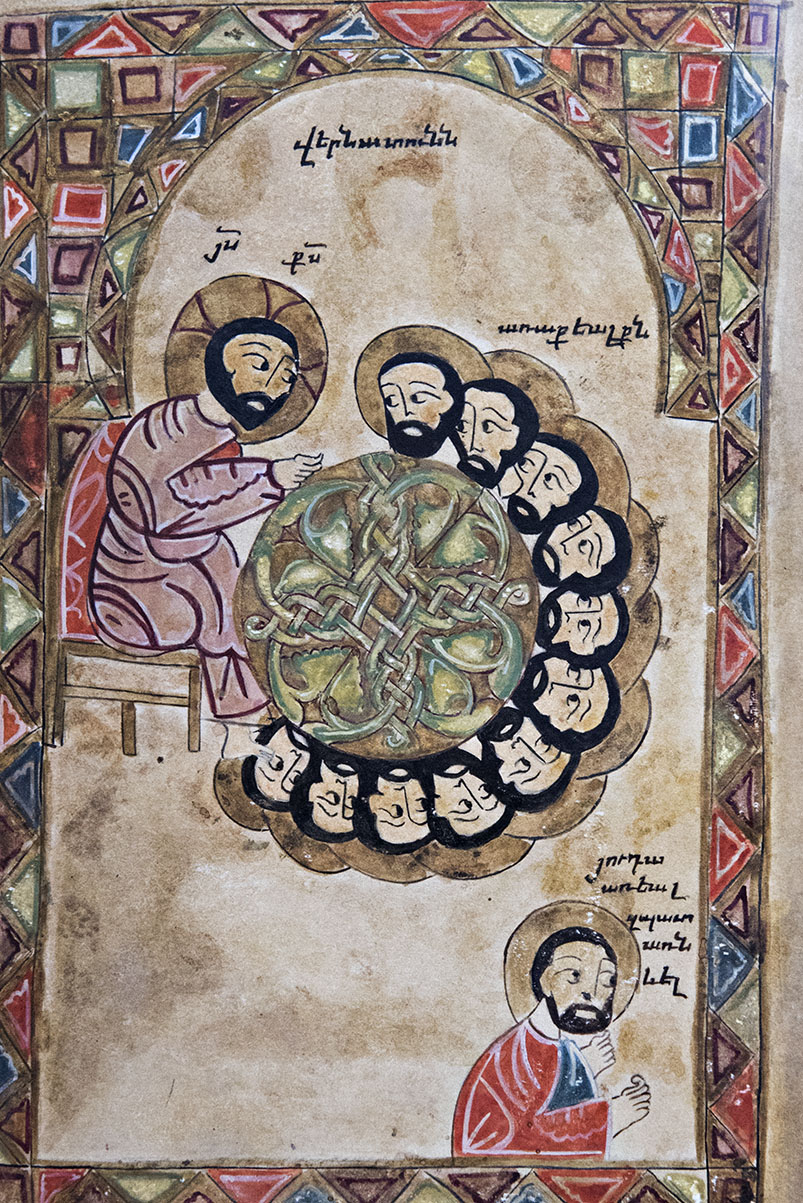
Through its simplicity, even its naivety, and the sobriety of its lines, this depiction of the Last Supper, taken from a 13th or 14th-century manuscript, is representative of a significant current in the Armenian art of illumination.
However, it is remarkable for the particular care given to its composition, colours, and ornamentation. In the centre, the cross, surrounded by lush vegetation, symbolizes the source of life. Despite the stylized nature of the drawing, the expressiveness of the faces is striking: deep sorrow is depicted, with the exception of Judas. Inscriptions in Armenian serve as captions, a common practice at the time. At the top, one can read: “upper room,” an expression used in some translations of the Gospels to designate the place where the Last Supper is said to have taken place. Slightly lower, the artist wrote “Jesus Christ,” “apostles,” and at the bottom: “Judas takes the piece [meaning the bread, symbolizing the body of Christ] and leaves.”
Illuminations adorn many religious manuscripts. Although they have been subjected to several episodes of destruction or looting, particularly during the genocide of 1915, tens of thousands of manuscripts have been preserved since the Middle Ages. Fortunately, all those located in Nagorno-Karabakh were secured at the Matenadaran, the manuscript library in Yerevan, the Armenian capital.